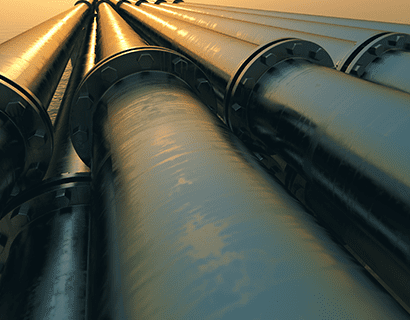Eddy current & A.C.F.M.
Powerful non-destructive testing techniques
#thinkNDTi are ideally placed to service your eddy current testing requirements, our team of highly experienced engineers are on hand to handle your needs even in the hardest to reach areas.
What is EDDY current and ACFM?
Eddy Current Testing (ECT) and Alternating Current Field Measurement (ACFM) are two powerful non-destructive testing (NDT) techniques designed to detect and assess defects, corrosion, and anomalies in conductive materials and structures. They rely on the principles of electromagnetic induction and magnetic fields to probe beneath the surface, providing valuable insights into the condition of materials without the need for physical contact or damage. These methods excel in their ability to assess a wide range of materials and are especially useful in applications where precision and sensitivity are paramount.
Applications across Industries.
Want a chat?
Take me back
The Eddy Current and ACFM Inspection Procedure
Preparation: The inspection area is prepared by cleaning the surface of the material to remove contaminants, ensuring optimal conditions for testing.
Probe Selection: Specialised probes, coils, or sensors are selected based on the material, geometry, and inspection requirements. The choice of probe affects the sensitivity and depth of inspection.
Excitation: An alternating current (AC) is passed through the probe, generating electromagnetic fields. In the case of ACFM, this excitation is pulsed and tailored to the material properties.
Induction of Eddy Currents: Eddy currents are induced within the material under inspection. These currents circulate in response to the electromagnetic field, interacting with defects or anomalies in the material.

Detection and Analysis: Sensors or detectors measure the changes in electromagnetic properties caused by the interaction between the eddy currents and defects. Any variations or anomalies are analyzed, and their characteristics are evaluated.
Assessment: The findings are assessed to determine the size, shape, and location of defects, corrosion, or anomalies. The significance of these findings is evaluated against industry standards and specifications.
Reporting: Inspection findings, along with images, data records, or graphical representations, are documented in a comprehensive report. This report serves as a record for quality control, maintenance planning, and regulatory compliance.

Advantages of Eddy Current and ACFM Inspection
Non-Destructive: They are non-destructive testing methods, preserving the integrity of the inspected materials and structures.
High Sensitivity: Both techniques are highly sensitive to surface and subsurface defects, making them ideal for precision inspections.
Real-Time Insights: ECT and ACFM provide real-time or near-real-time data, allowing for immediate action and decision-making.
Versatility: These methods can be adapted to inspect a wide range of conductive materials, from metals to composites.
Defect Characterisation: They offer the ability to characterise defects, including their size, depth, and orientation.

